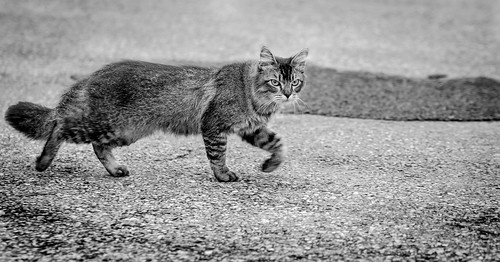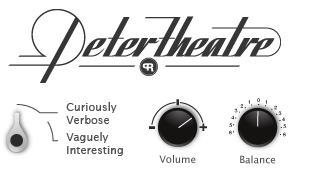On Little Cat Feet

“The fog comesI’m starting to feel that way about my running. I pad around the city on little cat feet. When I’m running on the sidewalk and I’m approaching someone from behind I’m very conscientious not to spook them. I assume they won’t hear me because my step is so quiet. A couple of years ago I read about something that became kind of a trend; running on your toes. The basic idea was we were all heel smashers and our tricked out running shoes with super spongy heels allowed it. This was generally seen as detrimental, so the theory went, to our feet, joints and muscles. After reading the list of problems of landing on your heel during running, I realized I was a prime offender. I did some more reading, I watched some videos and set out to try changing how I ran.
on little cat feet”
It’s so elemental to how you’re constructed, to who you are, that it’s counter intuitive to change how you run. I run the way I run because that’s how I run. Like breathing. Yet that very logic made me consider the change. You breathe differently when exercising (definitely when you swim or run or bike) so why not run differently?
“My stride became …a glide.”I gave myself a week to work it out. Those first times I tried, I was running almost cartoonishly on my tippy toes. It felt silly and like it took more energy. It was really hard work. At some point it, I found myself concentrating not so much on my foot fall but to avoid pronation (the inward roll of the foot) by landing squarely on the balls of my feet. The result was I was really landing on my forefoot and as a result, experiencing some supination (when the foot rolls or lands outwardly). When I really focussed on straightening out my feet I discovered I was landing squarely and flatly, not on the balls of my feet per se, but the front part of my foot. Once that happened something great took place. It was as if I was skimming over the pavement rather than stomping on it. My stride became more of a glide. The first thing I noticed was any recurrent shin splint pain went away. My knees felt better as did my hips. Another result was no shoulder or neck pain. The only downside was I could feel my calves working harder and the muscles at the base of my back, particular where they join my butt felt pretty “taxed” and taut.
Those early problems went away the more I ran. Another nice side effect was having different gears. I remember this rugby drill where we would line up at the end of the pitch and start running. When the coach blew his whistle you had to sprint harder. He would do this two more times. I was left behind after the first toot and seemed to get slower following every subsequent blow. I was only 20 then, but I would wager I could out pace that 20-year-old today. The mechanics of running on your forefoot means you can modulate your pace by extending your stride, kicking up on the follow through (think of it as trying to kick your own ass with your heel) and taking more strides per second. I finally have different paces for jogging, running at pace, running up tempo and running full out which I never had before. And my overall pace has increased too. That is partly due to simply running more (I ran over 100 km in September, 20 km more than my previous best). When I started, I typically ran 6:00 min/km. Over the years that dropped to anywhere between 5:15 min/km and 5:30 min/km. In the last two years since I’ve changed my running style, that has dropped to 5:00 min/km and in the last two months my average pace was 4:45 min/km (my current average pace is 4:41 min/km). I know that’s not a competitive pace but it means I’ve shaved over a minute off every kilometre which over 10 kilometres translates to 12:30 mins.
Of course, no sooner had I become accustomed to this running style than a slew of articles began to appear decrying changing your “natural” way to run. If you land on your heels when you run, so what? Don’t change. For me the change had so many benefits that when I run now and I accidentally make a heel strike, it feels jarring and awful. So if you run and land on your heels and you feel fine, then don’t change but if you were like me and running resulted in sore joints and in particular, shin splints then maybe you should try changing your stride. Even if you don’t like it, it will make you aware of how you run and even the fact that there is such a thing as running technique.
By the way, here’s the rest of that Carl Sandburg poem:
The Fog
Carl SandburgThe fog comes
on little cat feet.
It sits looking
over harbor and city
on silent haunches
and then moves on.
I don’t spend much time looking over the harbour and city, but my haunches are pretty silent – and tight. That’s right, I’ve got tight little silent haunches.


1 Comments:
Funny as ever!
You convinced me, halfway through, by the list of benefits you gave us. I intend to try the cat-fall running style, though I expect I'll take longer getting used to it, as I don't run more than a couple of times a month.
Post a Comment
<< Home